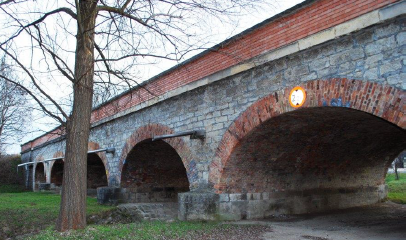1 Institute of Structural Engineering, University of Natural Resources and Life Sciences, Vienna, Austria
ABSTRACT
Structural damage to bridges may arise slowly in time as well as suddenly under abnormal actions (e.g. earthquake, mud-flow etc.). Accurate estimation of bridge load bearing capacity is required in order to make a structural assessment and hence to take effective maintenance actions for the prediction of life-cycle performance. However, therefore an appropriate numerical model as well as material parameters and boundary conditions of the structure are necessary. Building a reliable finite element model of historic masonry structures is a difficult undertaking due to the challenges in accurate representation of geometry, complex material behaviour and complicated boundary conditions. Model calibration refers to correcting the inherent deficiencies within the finite element model by matching monitored data and it produces more reliable numerical models [1]. Therefore monitoring data has been obtained from (a) in-situ measurements on a railway arch bridge and (b) measurements by laboratory tests. Within this paper the main focus is laid on the laboratory tests. Thereby in a first test-sequence small scale tests were carried out on single bricks. The target was to obtain the compressive strength with respect to the loading direction. In a second test-sequence a scaled 1:2 masonry arch bridge will be tested under vertical and horizontal loads. Finally some general remarks according to the methods of testing and modelling of masonry arch bridges are discussed.
KEYWORDS: compressive strength, monitoring, arch bridge, experimental testing
305.pdf



